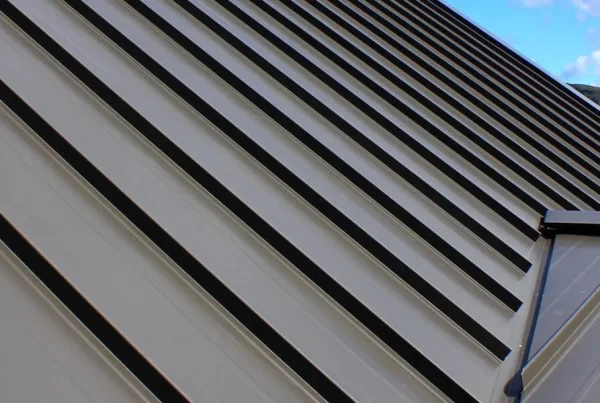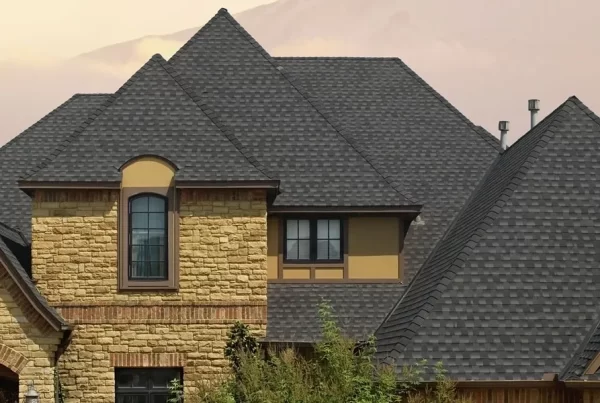When embarking on the journey of roof replacement, homeowners are met with a critical decision that goes beyond mere aesthetics: selecting the right material. This choice is paramount as it influences the roof’s durability, energy efficiency, and the overall protection of the home. With numerous options available, navigating through the selection process can be daunting. This guide aims to demystify the various roofing materials, helping you make an informed decision that aligns with your needs, preferences, and budget.
The Significance of Roof Replacement
Roof replacement is a significant home improvement project that not only enhances the visual appeal of your property but also its functional integrity. Roofs endure constant exposure to environmental elements, leading to wear and tear that necessitates replacement. Selecting an appropriate roofing material can prevent leaks, structural damage, and inefficient energy use, ensuring your home remains secure, comfortable, and cost-effective in terms of energy bills.
Key Considerations
Several factors must be considered when choosing a roofing material:
- Climate: The material’s ability to withstand local weather conditions is crucial.
- Durability: Seek materials that promise longevity and require minimal upkeep.
- Aesthetic Appeal: The roofing should complement your home’s architectural design.
- Budget: Material costs vary, so it’s important to choose one within your financial means.
- Energy Efficiency: Some materials offer superior insulation and reflectivity, leading to energy savings.
Exploring Roofing Material Options
Asphalt Shingles
Asphalt shingles are favoured for their affordability, ease of installation, and variety in styles and colours. They suit most residential homes and provide a balance between cost and performance, lasting 20-30 years. Their limitation lies in less resilience in extreme weather conditions compared to more robust materials.
Metal Roofing
Metal roofing, made from materials like aluminum, steel, copper, and zinc, is celebrated for its durability and longevity, often exceeding 50 years. It withstands severe weather, is fire-resistant, and offers energy savings by reflecting sunlight. The initial cost is higher, but the long-term benefits usually justify the investment.
Tile Roofing
Clay or concrete tile roofing boasts a unique aesthetic and exceptional durability, with lifespans over 50 years. Ideal for homes with Mediterranean or Southwestern designs, tiles provide excellent heat resistance and insulation. However, they are heavier and costlier, requiring professional installation to ensure structural support.
Slate Roofing
Slate offers unparalleled longevity and natural beauty, with lifespans that can surpass 100 years. It is incredibly durable, weather-resistant, fireproof, and eco-friendly. The primary cons are its high cost and the need for a reinforced structure due to its significant weight.
Wood Shingles and Shakes
For a natural, rustic look, wood shingles and shakes are perfect, aging gracefully over time. Made from cedar, redwood, or pine, they offer good insulation. They do, however, demand more maintenance and are vulnerable to fire, rot, and insects unless treated.
Synthetic Roofing
Synthetic materials, like rubber, plastic, and polymer, mimic natural materials’ looks but offer a lightweight, durable, and often more affordable option. These materials are resistant to fire, impact, and weather, making them a viable alternative for those desiring the appearance of natural materials without the high cost and maintenance.
Navigating Your Options
The journey to selecting the right material for your roof replacement is a balancing act of durability, cost, aesthetics, and climate suitability. Consulting with a professional roofing contractor can provide valuable insights into the best materials for your specific situation, ensuring a successful roof replacement project.
Installation and Maintenance: The Key to Longevity
The longevity and performance of your roof are not only determined by the material chosen but also by the quality of installation and ongoing maintenance. Professional installation ensures that the roofing material is correctly laid out, sealed, and secured, minimizing the risk of future issues. Regular maintenance, such as cleaning gutters, inspecting for damage, and timely repairs, extends the life of your roof, regardless of the material.
Environmental Considerations
Today, environmental impact is a crucial factor for many homeowners. Materials like metal roofing and slate are recyclable and offer longevity, reducing the need for frequent replacements. Green roofing options, such as solar tiles and green roofs, also contribute to energy efficiency and sustainability, albeit at a higher initial cost.
Budgeting for Your Roof Replacement
Budget plays a significant role in the decision-making process. While it’s tempting to opt for the least expensive option, it’s essential to consider long-term savings and value. Energy-efficient materials may have higher upfront costs but can lead to significant savings on energy bills. Financing options, rebates, and incentives for certain eco-friendly materials can also offset initial costs.
Conclusion
A roof replacement is a substantial investment in your home’s future, safeguarding against the elements and enhancing its overall value. By carefully considering the material options and consulting with professionals, you can ensure that your new roof meets your aesthetic preferences, withstands local weather conditions, and fits within your budget. Remember, the best choice is one that balances immediate needs with long-term benefits, ensuring your home remains protected and beautiful for years to come.





